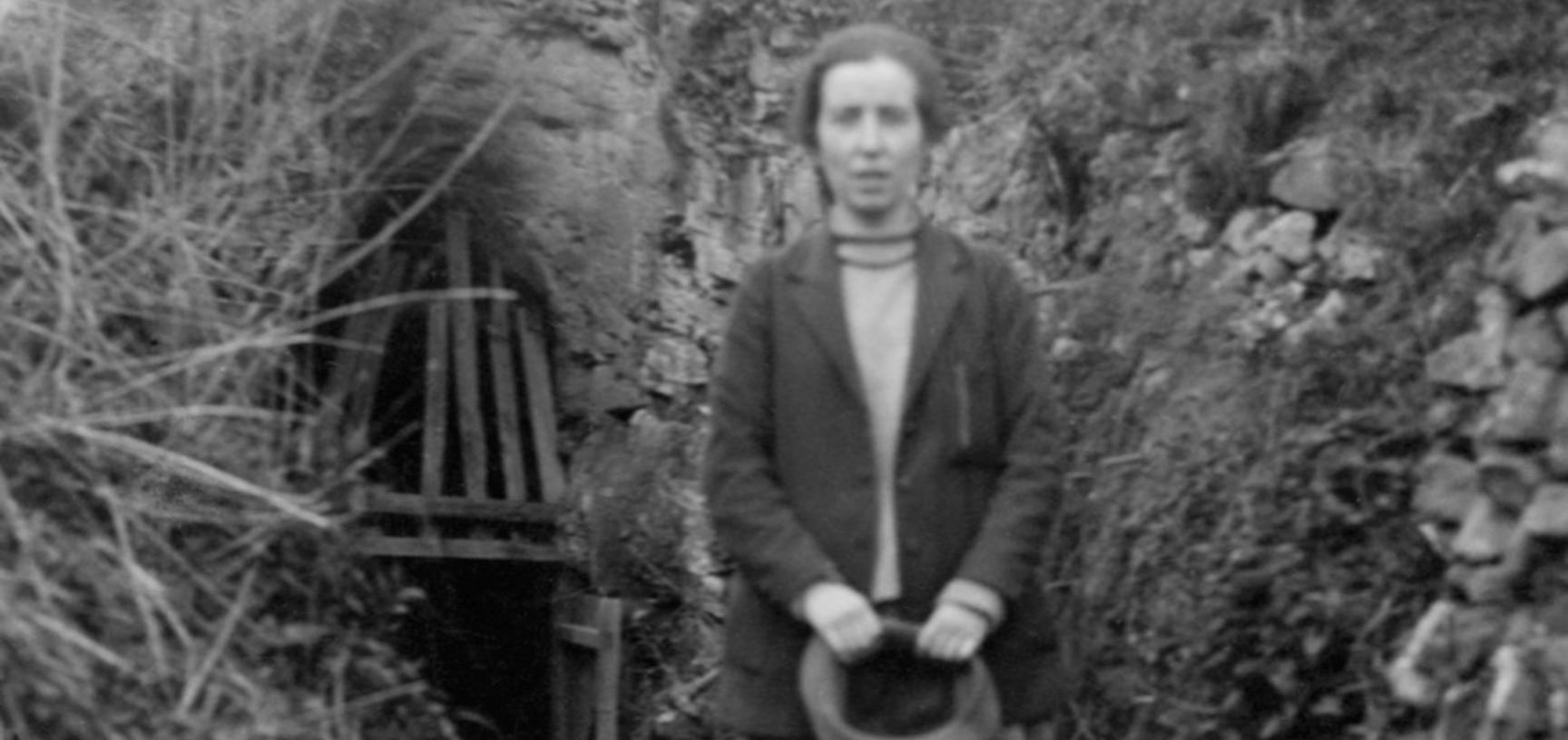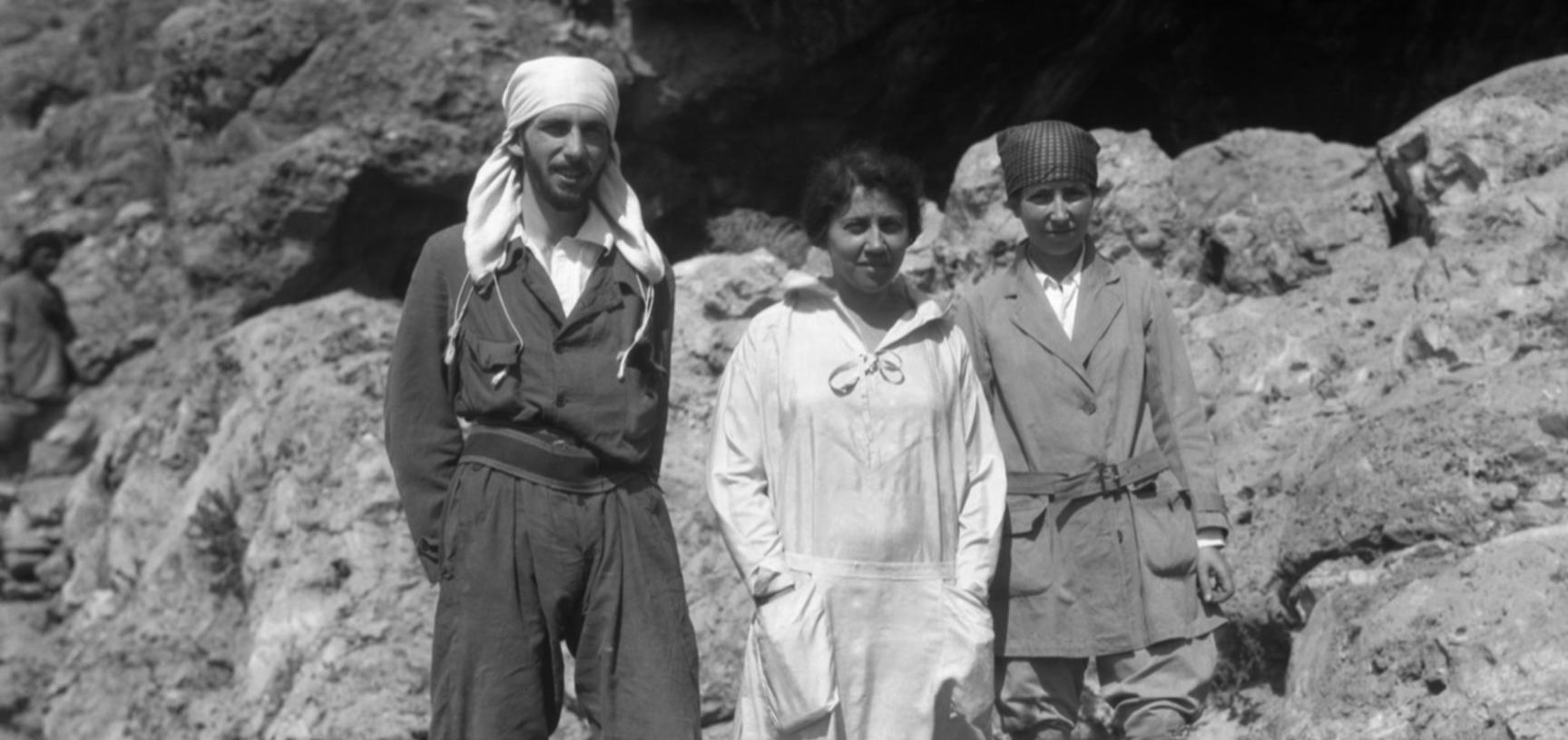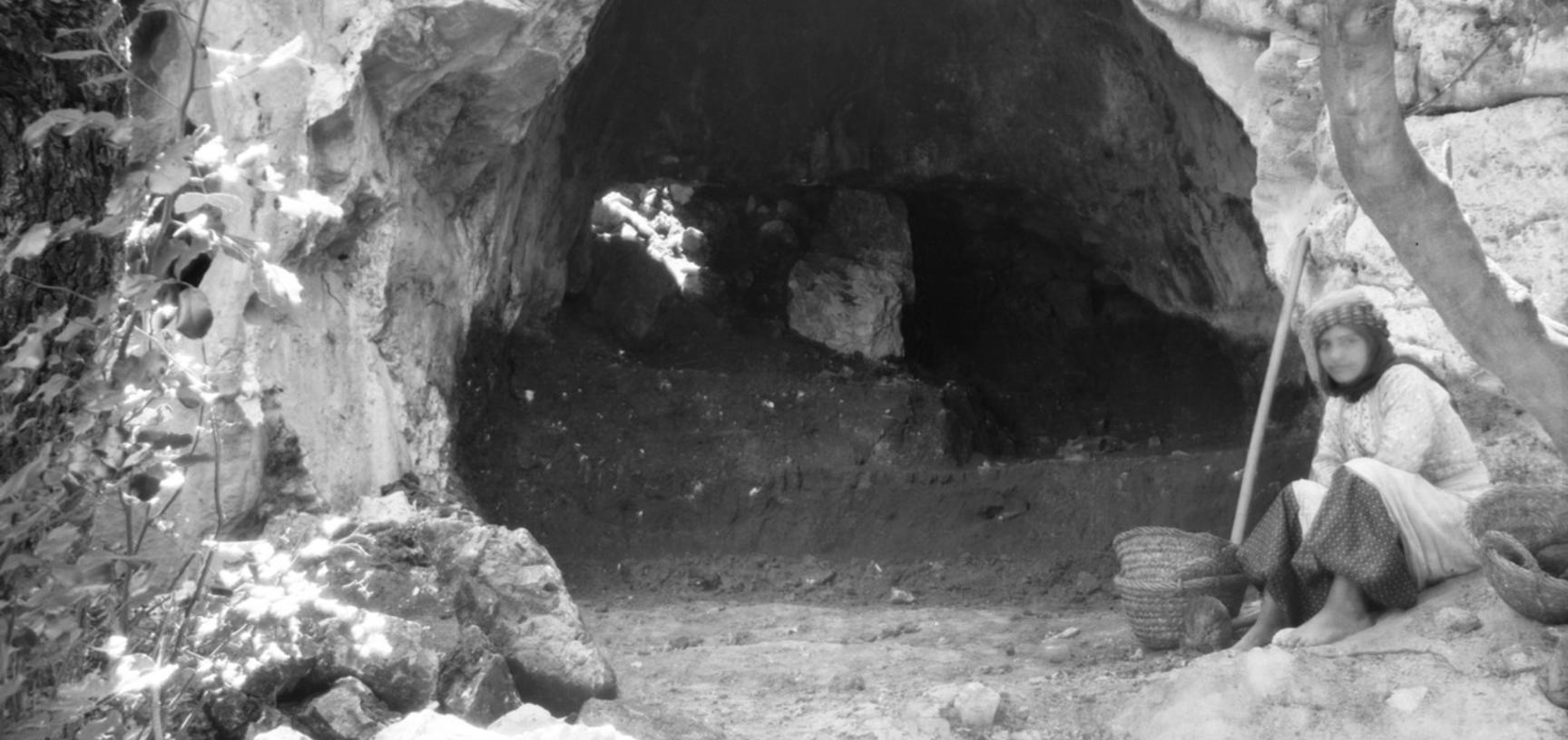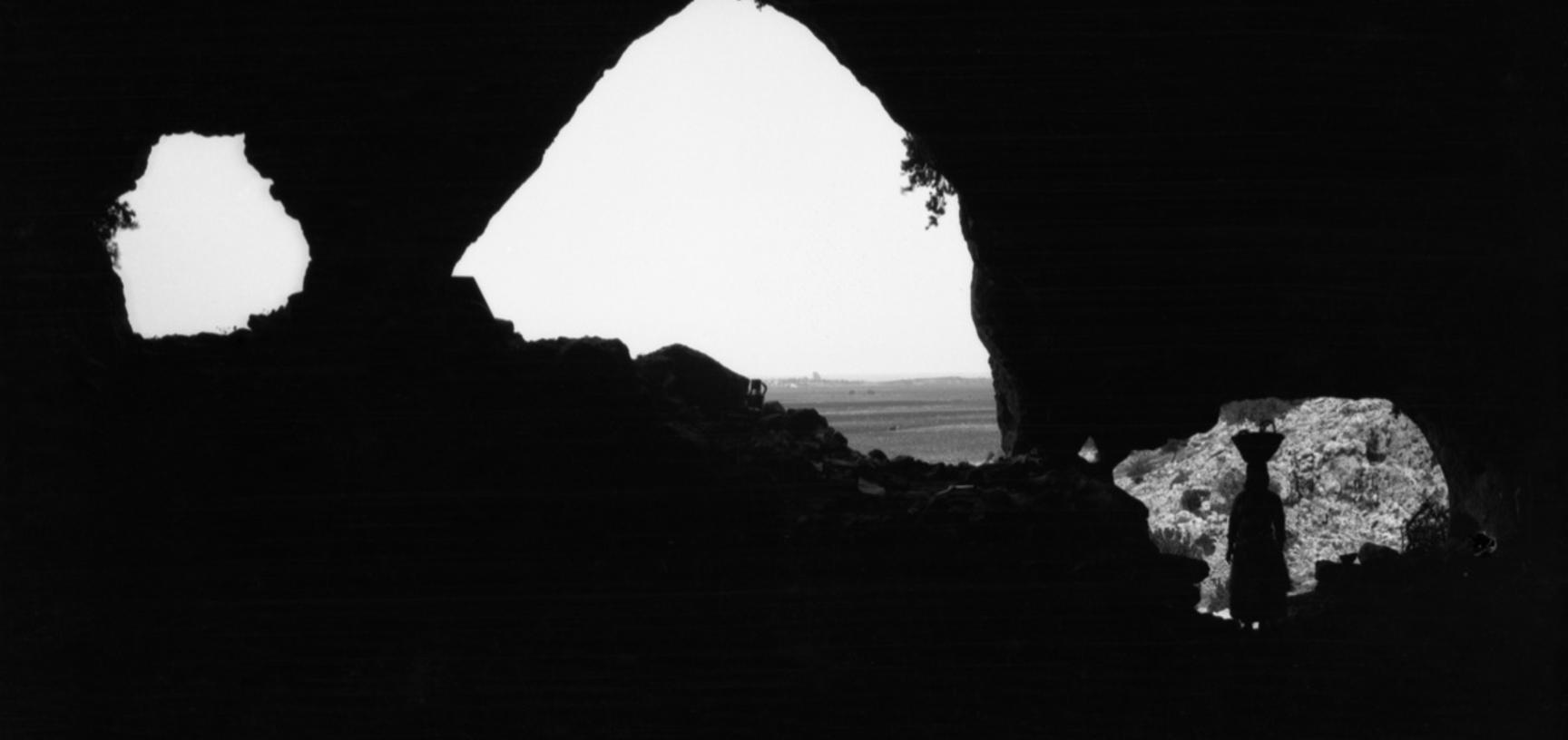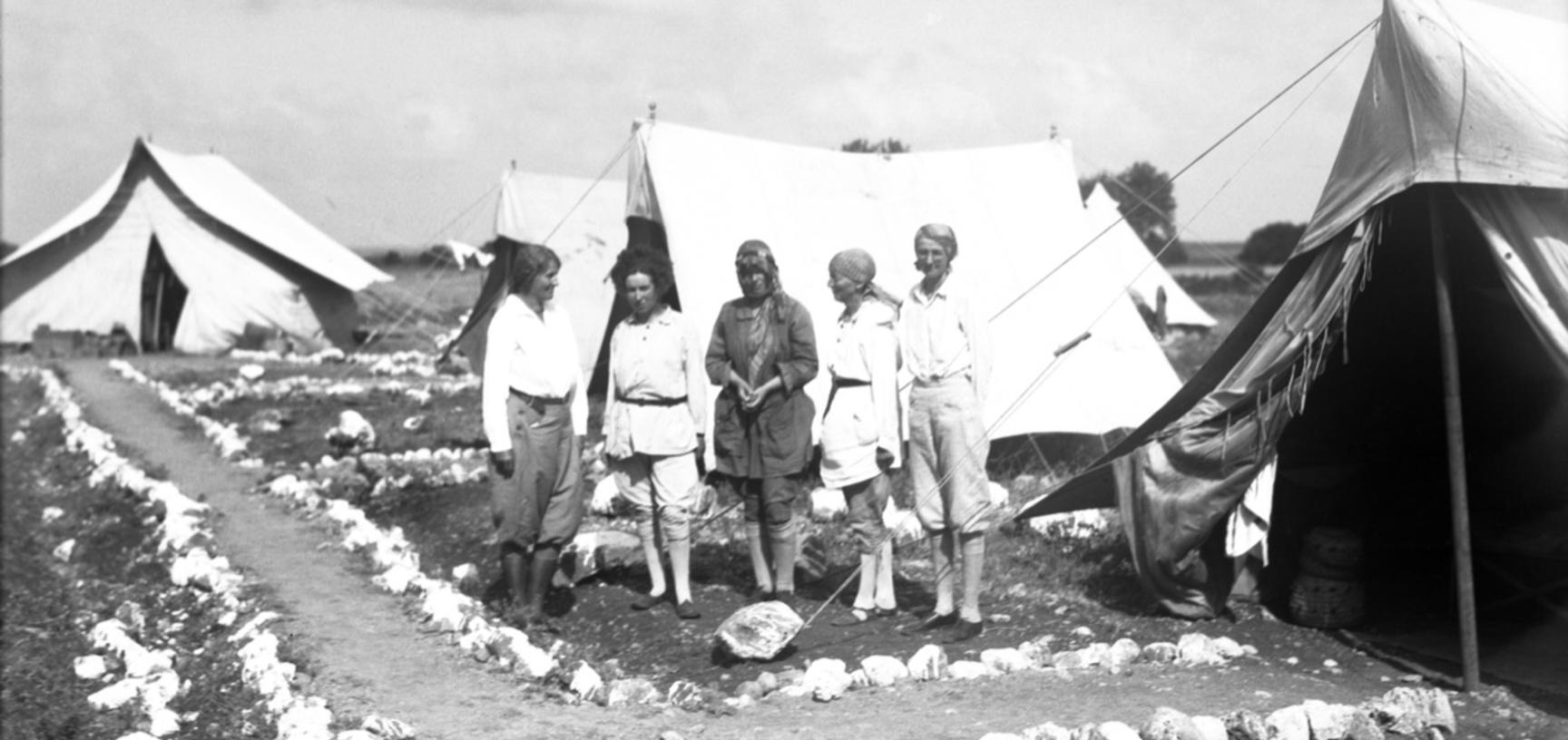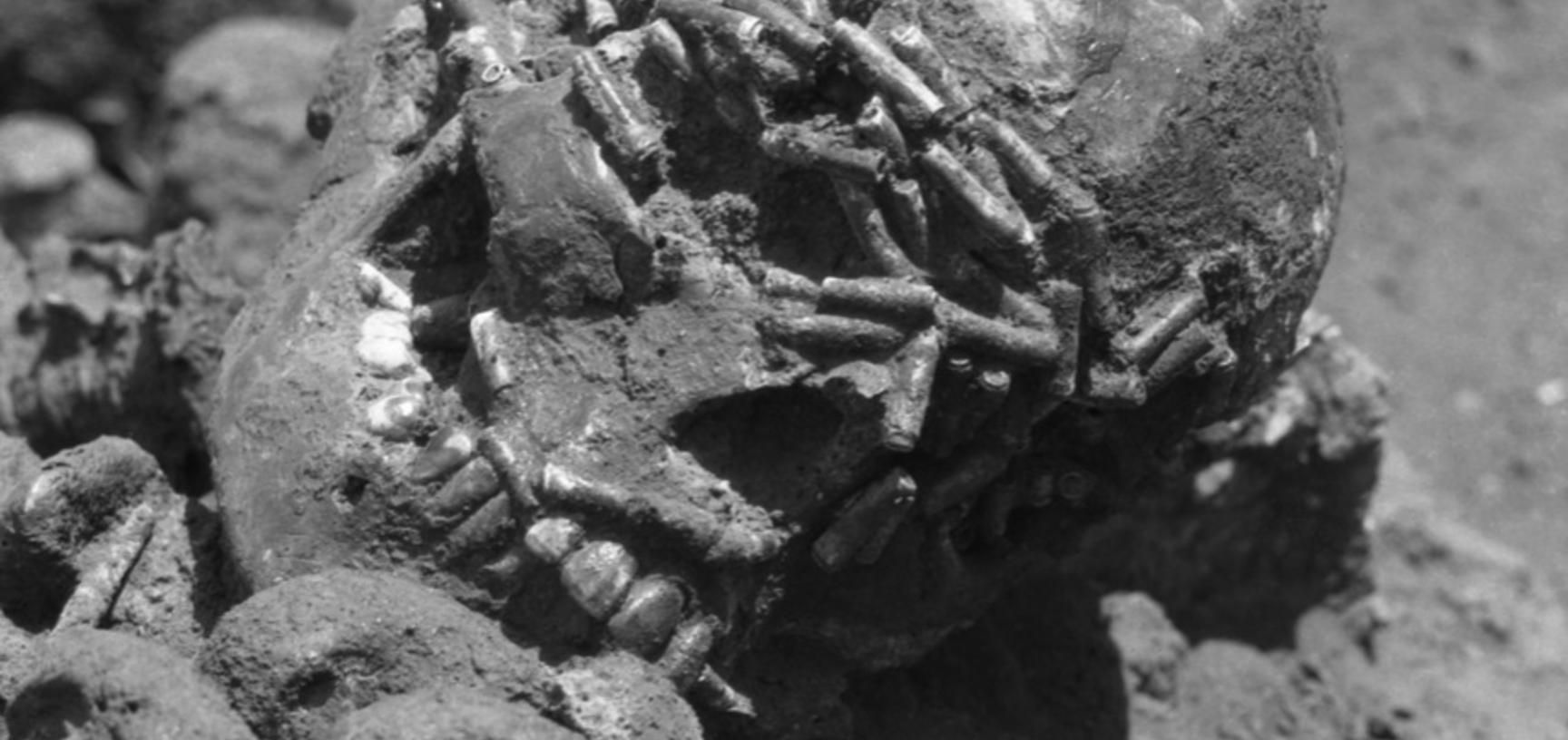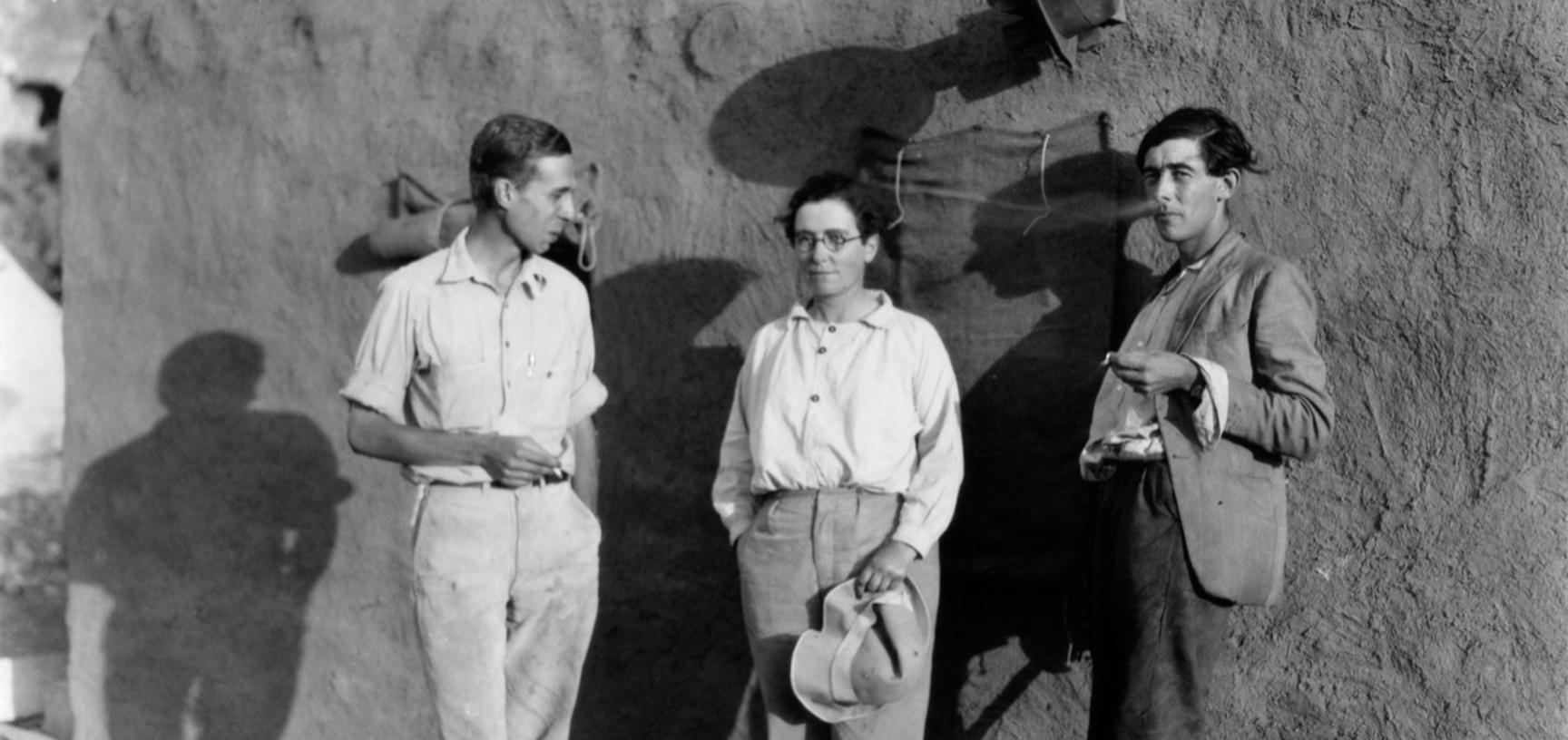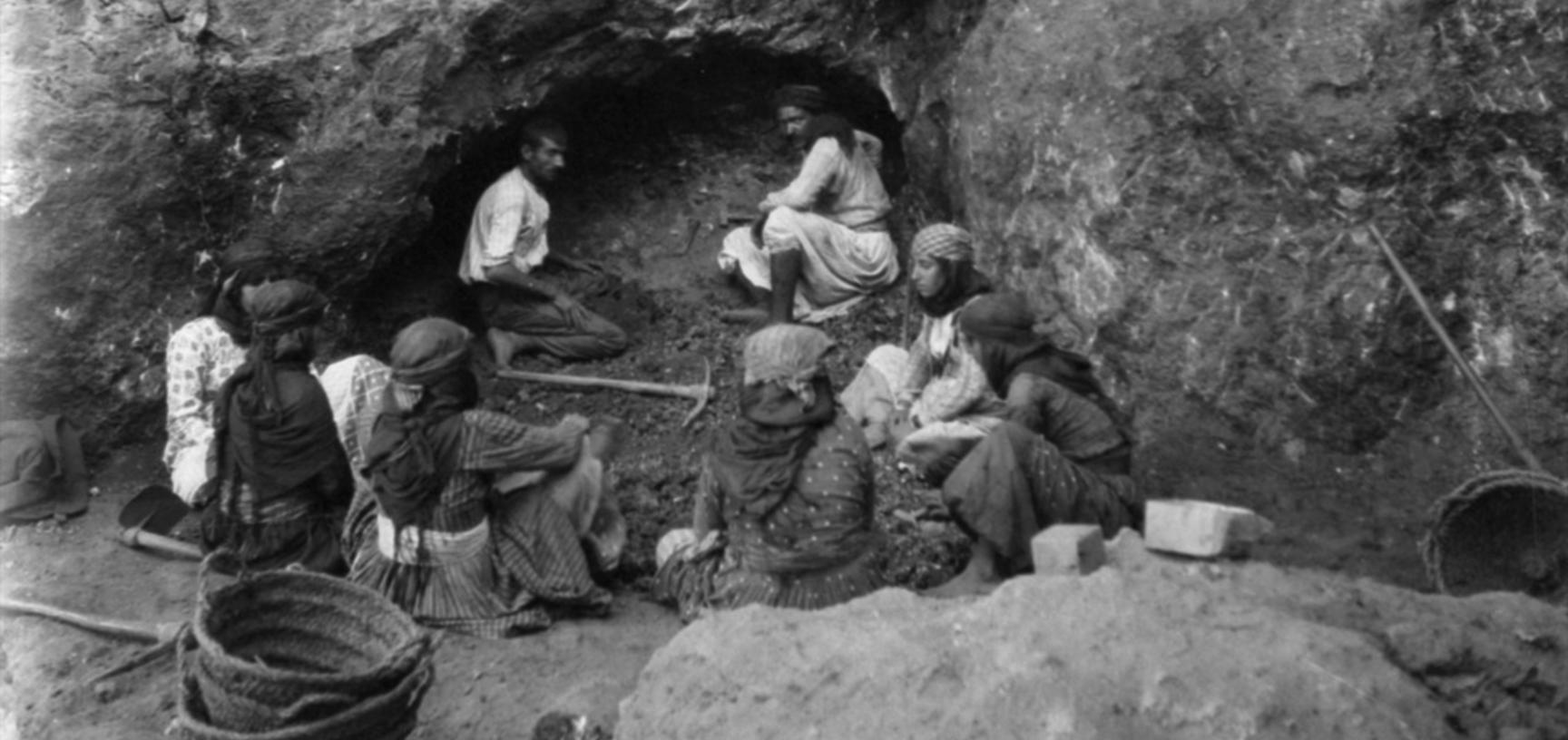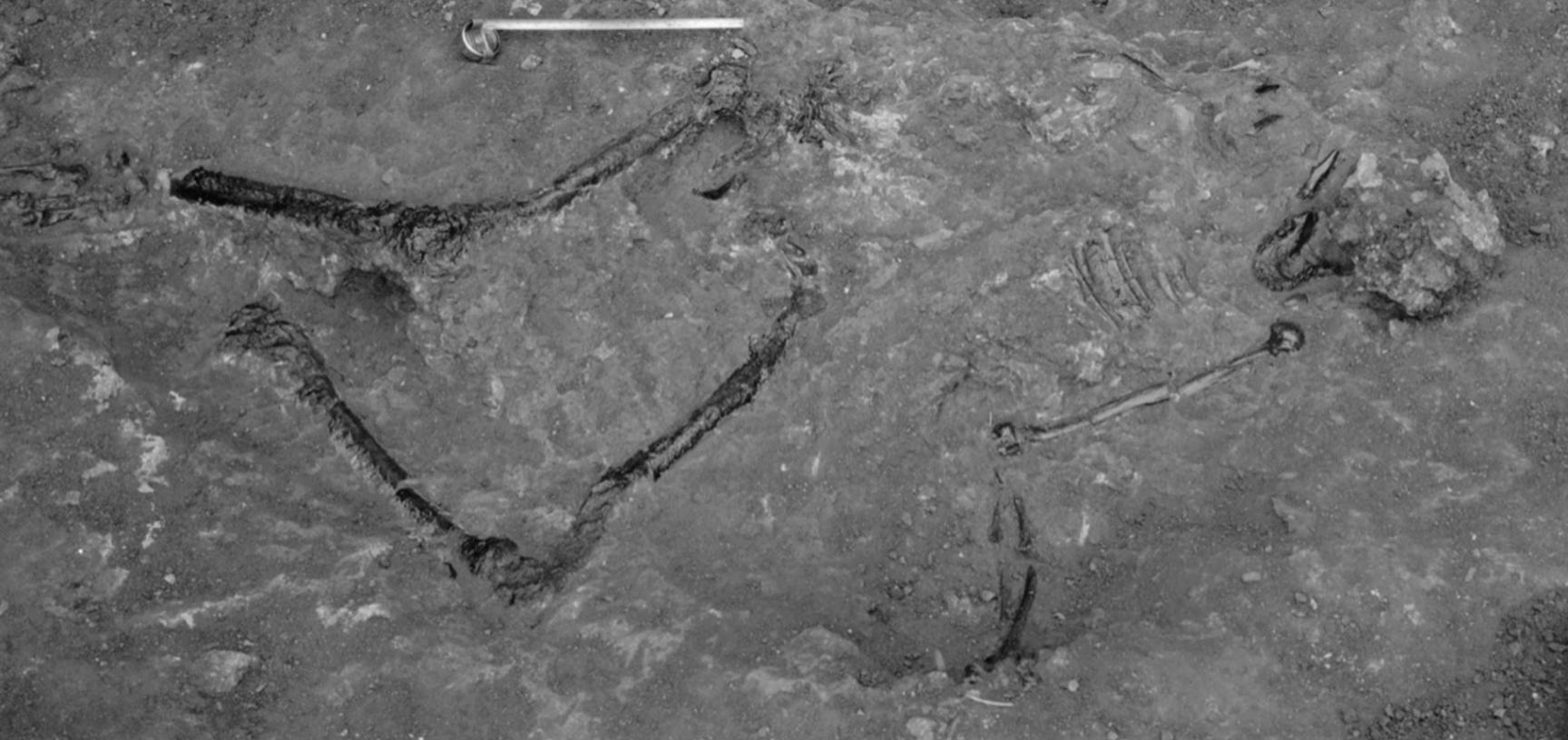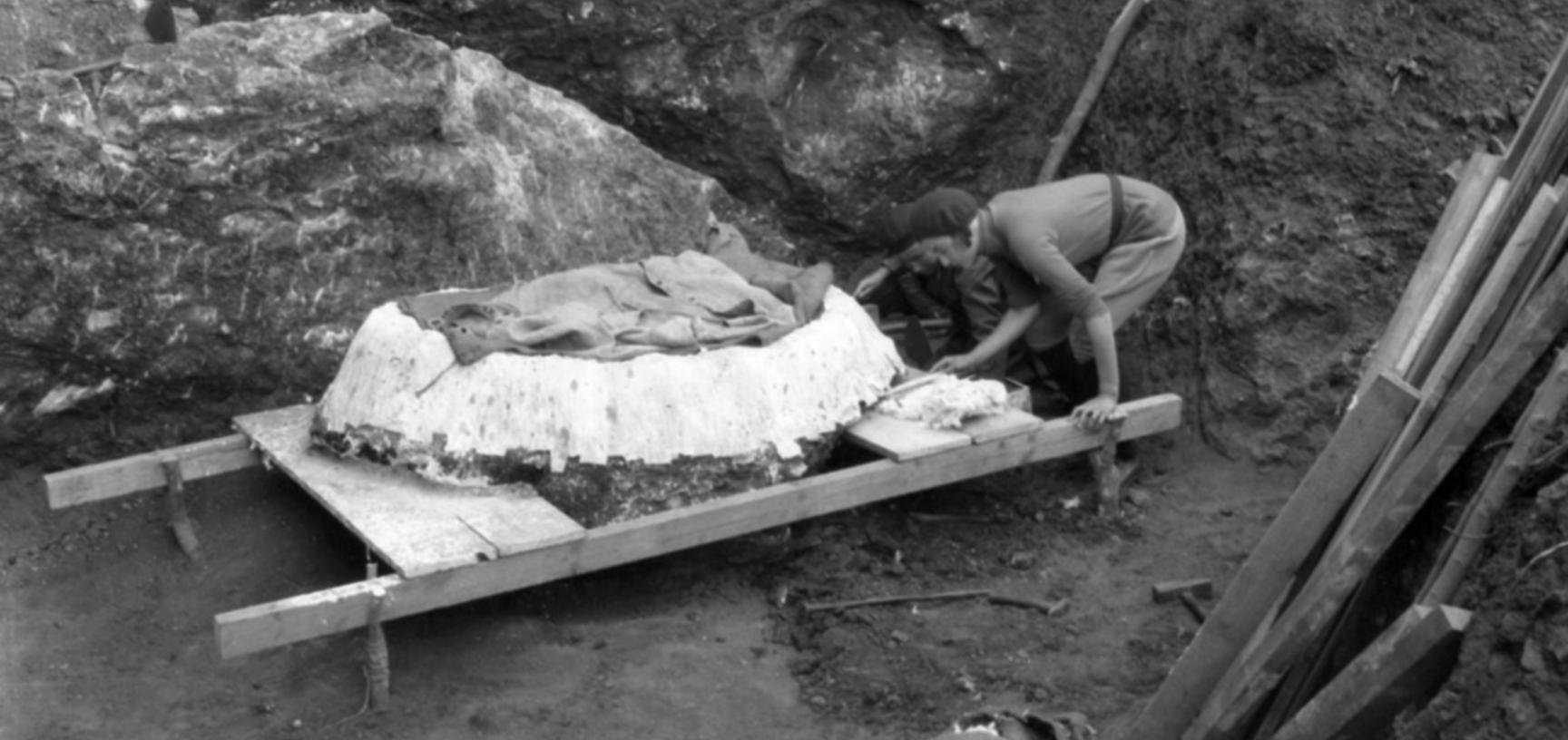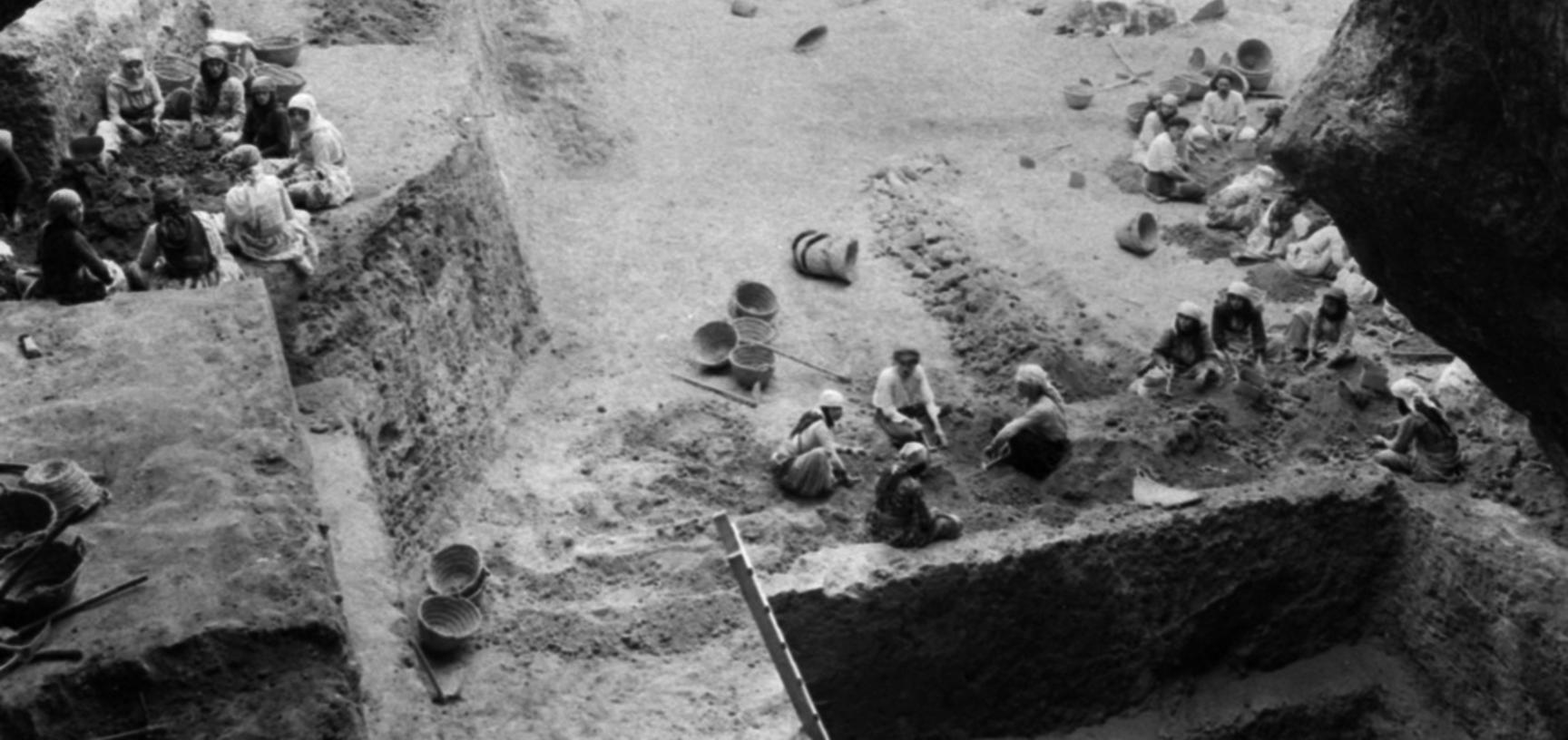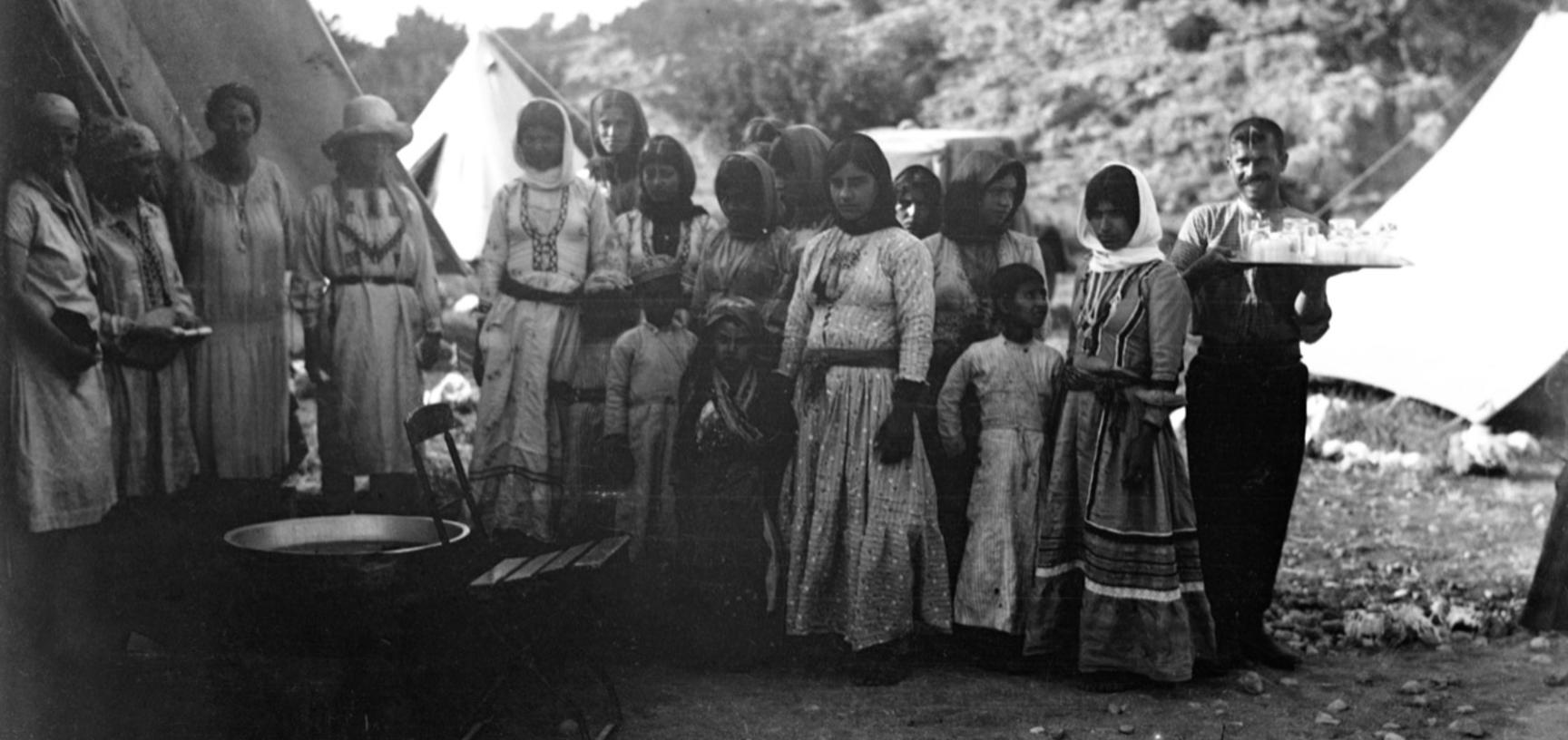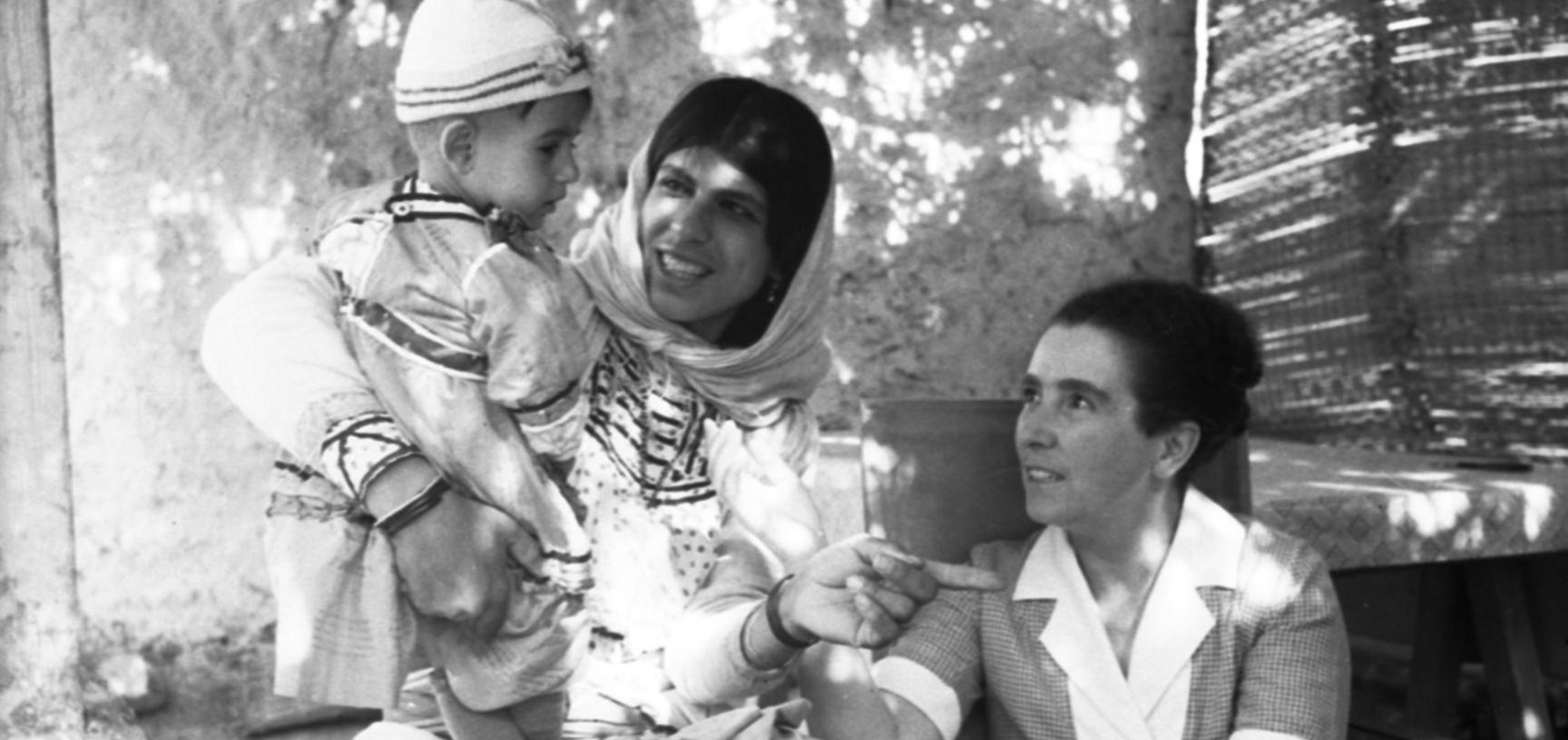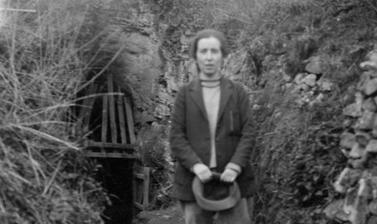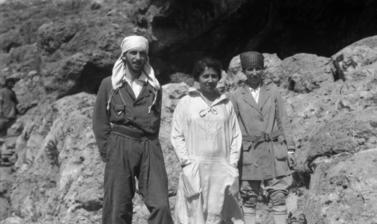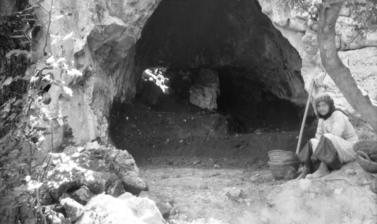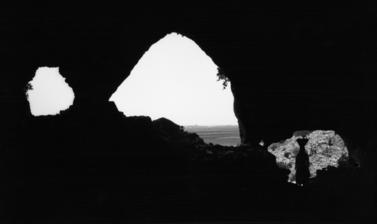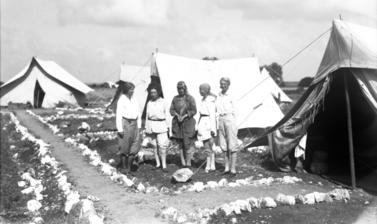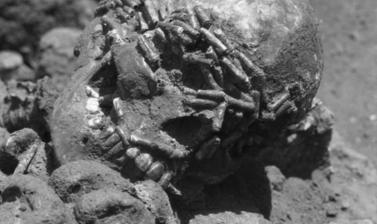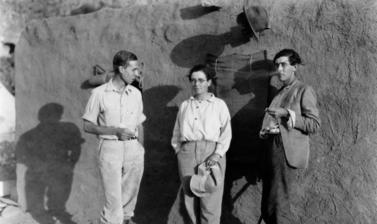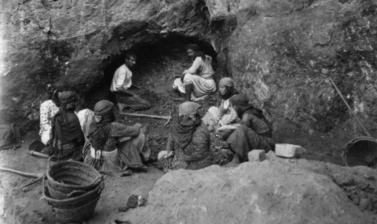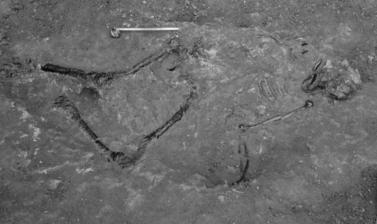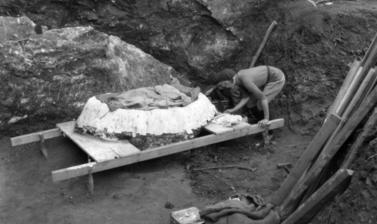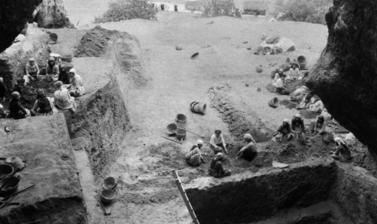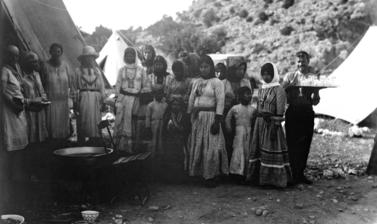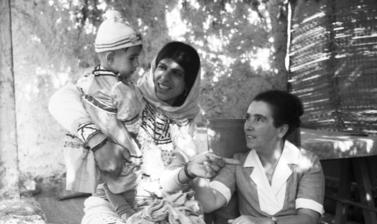A Pioneer of Prehistory: Dorothy Garrod and the Caves of Mount Carmel
This display presents seventeen photographs from the collection of the archaeologist Dorothy Garrod (1892–1968), which was given to the Pitt Rivers Museum by her friend and executor Suzanne Cassou de Saint Mathurin in 1986. They include portraits of Garrod’s friends and mentors, as well as the famous excavations which she directed between 1929 and 1934 at the Wadi el-Maghara (Valley of Caves), on Mount Carmel in Palestine (now in Israel). Some of the Stone Age artefacts recovered from this fieldwork are also displayed, together with signed offprints of Garrod’s writings and her administrative notebook from the 1933 excavation season. The exhibition highlights not only Garrod’s career, but also some of the influences and teamwork upon which her achievements were based.
When Dorothy Garrod first came to Oxford in 1921 to undertake the University’s Diploma in Anthropology, she was one of only a small number of female students. The course at that time was under the direction of Robert Marett and it included classes taught in the Pitt Rivers Museum. It was Marett, Garrod later told her student Mary Kitson Clark, who inspired her to become a prehistorian. After two years further training in France under the Abbé Breuil, one of the leading prehistorians of the day, she undertook her first independent excavations on Gibraltar in 1925 and 1926. At that time the role of women in the emerging university discipline of archaeology faced a serious obstacle: excavation was considered to be a largely male pursuit. Yet Garrod seems to have had little trouble working in the field and she emerged as one of the outstanding archaeologists of the twentieth century.
During the course of her life, Dorothy Garrod conducted several other excavations – in Kurdistan (1928), Bulgaria (1938) and Lebanon (1958–1964) – but it was her involvement in the fieldwork on Mount Carmel which has had the greatest impact. This was the first work to establish the long sequence of human occupation in the Levant (modern Lebanon, Syria, Israel, Palestine and Jordan) and it revealed an archaeological sequence spanning nearly 500,000 years. This included material from both Neanderthals and Homo sapiens, and the caves which Garrod and her team excavated are still key to any discussion of the relationship between these two different human species. It also provided further evidence of a culture that Garrod was the first to identify – the Natufian – which dates between 12,000 and 9,500 BC.
Her publication of this site (with Dorothea Bates), entitled The Stone Age of Mount Carmel (1937), was a major landmark in its field. Two years later Garrod was appointed to the Disney Chair of Archaeology at the University of Cambridge, the first time that a woman had ever held the position of professor at either Oxford or Cambridge. In this again she was a pioneer, and her successes have been a source of inspiration for other scholars ever since.
Acknowledgements and Credits
- Exhibition researched and curated by Alice Stevenson
- Case design and installation by Jon Eccles
- Special thanks to Philip Grover, Christopher Morton, Malcolm Osman and Jaanika Vider; and to Pamela Jane Smith, Alison Roberts, Nick Barton and Michael Haslam


